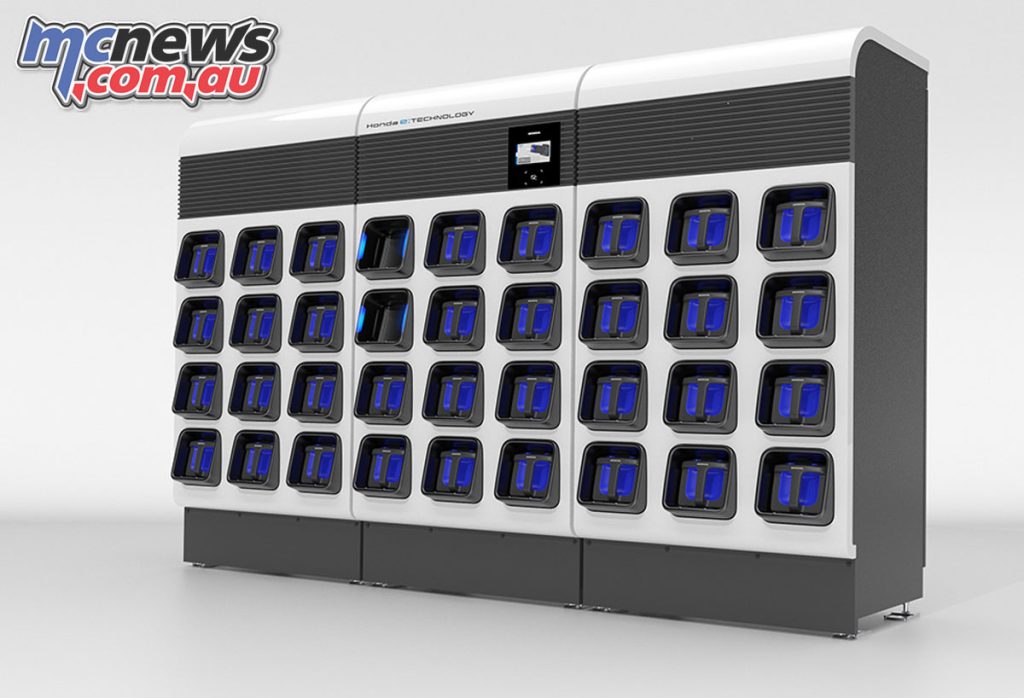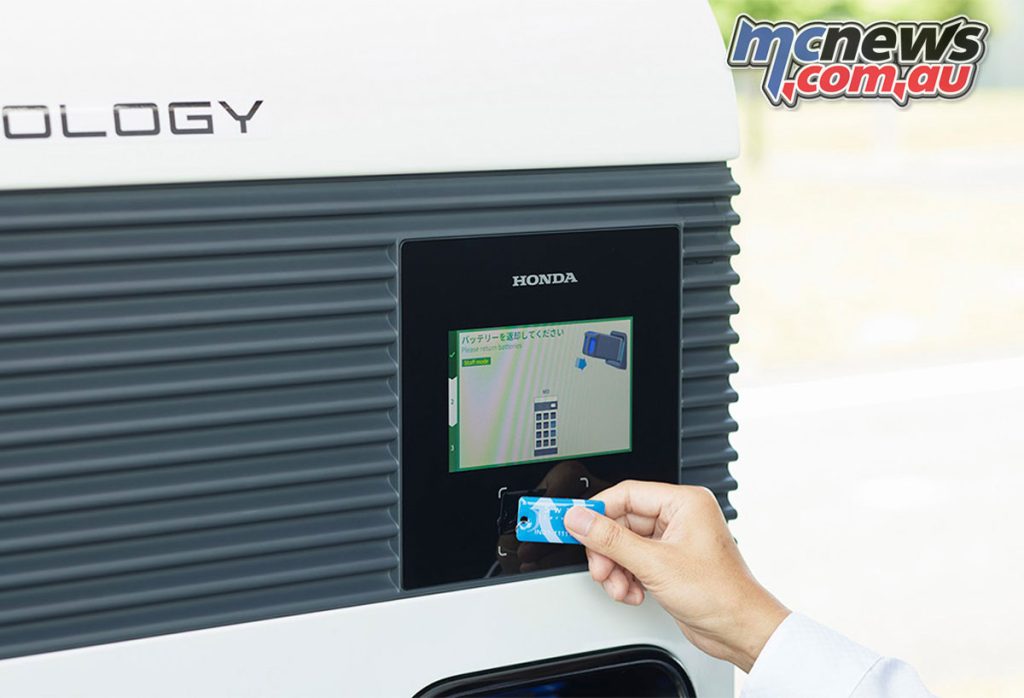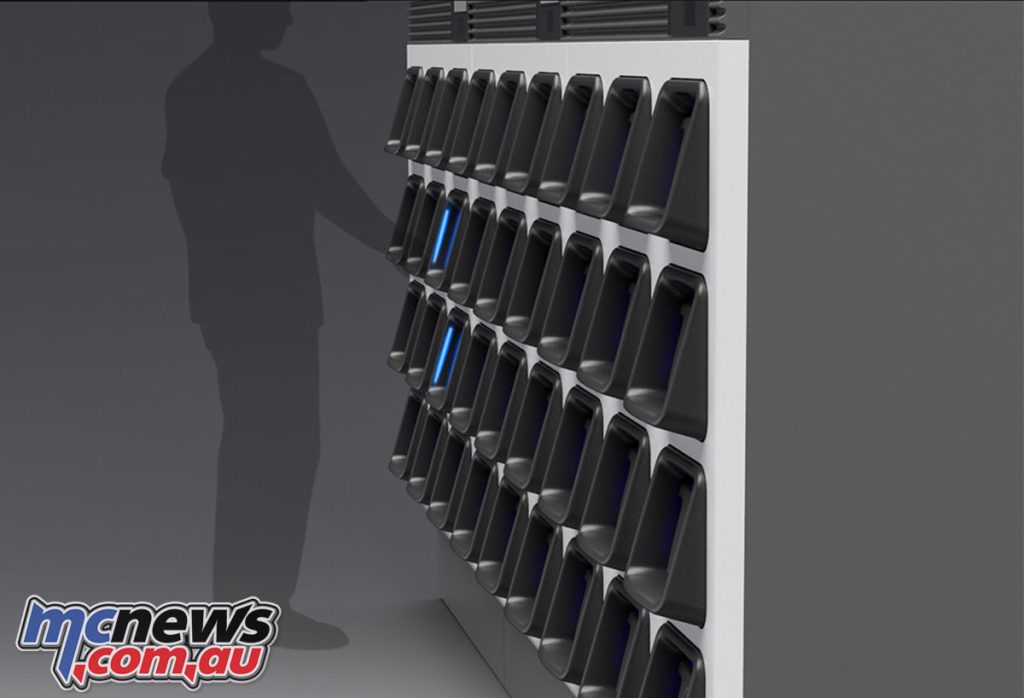Honda’s Battery Exchanger Station introduced in Japan
Leading the way in the charge forward into swappable battery technology for motorcycles and scooters in Japan is Honda’s Power Pack Exchanger, a charging and swapping station, with Gachaco Inc. receiving the first unit.
While not the first implementation of this kind of technology – Honda run a similar system in India for electric-trikes – it does mark a step forward in Japan.

The Honda Power Pack Exchanger is capable of charging multiple batteries at a time (MPP e), for use in electric motorcycles and other products which run these battery units.
Users can grab a fully charged MPP e from the station, rather than having to wait for the vehicle to charge, offsetting the charging inconvenience and range limitations normally attributed to electric vehicles.
The Honda Power Pack Exchanger is designed to offer infrastructure that allows widespread use of the MPP e battery system and electric vehicle, running the Honda Power Pack Cloud system to manage the battery sharing services.

Run as a battery wall the exchanger features angled slots for easy insertion of batteries, and charging is automatic. Swapping of batteries is via an IC card for authentication, with the system letting users know which batteries are available and fully charged.
The cloud system allows people to register, find stations, swap batteries and make payments. This is also accessible via a smartphone, while for the businesses running these services it is also all centrally managed via cloud services.

The exchanger can also be expanded, with the main unit having extension units added to the main control unit, for greater capacity and charging, ensuring a scalable solution for high demand environments.
The unit will also continue running during a blackout, using an MPP e as a power source, so that users can continue hiring out batteries.
The Honda Power Pack Exchanger is part of the manufacturer’s support of electrification of mobility products and contribution to a low-carbon society. Renewables made up 22.4 per cent of electricity generation in Japan in 2021, with fossil fuel accounting for 71.7 per cent while nuclear accounts for almost 6 per cent, according to isep.

This seems the perfect answer to making electric scooters and motorcycles truly viable for longer city/suburban commuters. Unfortunately, I think we are still a long way of seeing something like this in large scale use in Australia.























